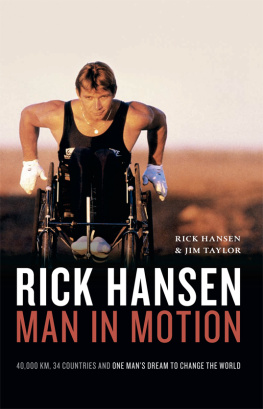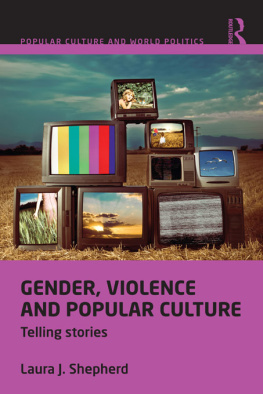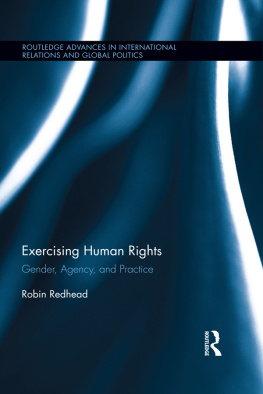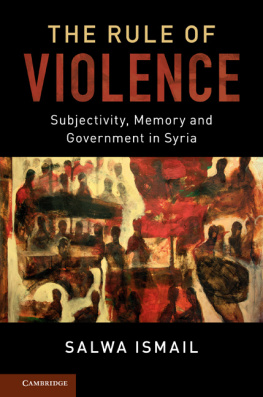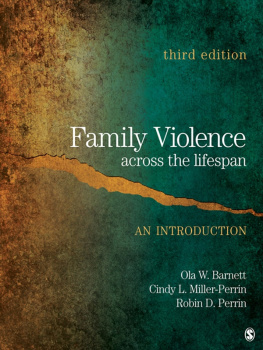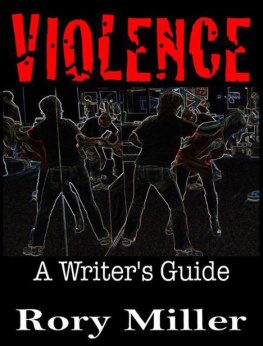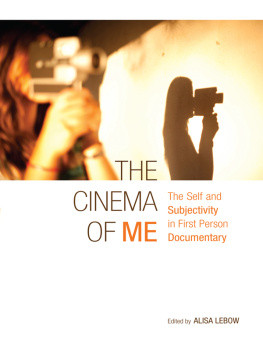Hansen-Miller - Civilized violence: subjectivity, gender and popular cinema
Here you can read online Hansen-Miller - Civilized violence: subjectivity, gender and popular cinema full text of the book (entire story) in english for free. Download pdf and epub, get meaning, cover and reviews about this ebook. year: 2011, publisher: Ashgate Publishing Ltd, genre: Politics. Description of the work, (preface) as well as reviews are available. Best literature library LitArk.com created for fans of good reading and offers a wide selection of genres:
Romance novel
Science fiction
Adventure
Detective
Science
History
Home and family
Prose
Art
Politics
Computer
Non-fiction
Religion
Business
Children
Humor
Choose a favorite category and find really read worthwhile books. Enjoy immersion in the world of imagination, feel the emotions of the characters or learn something new for yourself, make an fascinating discovery.

- Book:Civilized violence: subjectivity, gender and popular cinema
- Author:
- Publisher:Ashgate Publishing Ltd
- Genre:
- Year:2011
- Rating:5 / 5
- Favourites:Add to favourites
- Your mark:
- 100
- 1
- 2
- 3
- 4
- 5
Civilized violence: subjectivity, gender and popular cinema: summary, description and annotation
We offer to read an annotation, description, summary or preface (depends on what the author of the book "Civilized violence: subjectivity, gender and popular cinema" wrote himself). If you haven't found the necessary information about the book — write in the comments, we will try to find it.
Hansen-Miller: author's other books
Who wrote Civilized violence: subjectivity, gender and popular cinema? Find out the surname, the name of the author of the book and a list of all author's works by series.
Civilized violence: subjectivity, gender and popular cinema — read online for free the complete book (whole text) full work
Below is the text of the book, divided by pages. System saving the place of the last page read, allows you to conveniently read the book "Civilized violence: subjectivity, gender and popular cinema" online for free, without having to search again every time where you left off. Put a bookmark, and you can go to the page where you finished reading at any time.
Font size:
Interval:
Bookmark:
CIVILIZED VIOLENCE
For Clare, with love
Subjectivity, Gender and Popular Cinema
DAVID HANSEN-MILLER
ASHGATE
David Hansen-Miller 2011
All rights reserved. No part of this publication may be reproduced, stored in a retrieval system or transmitted in any form or by any means, electronic, mechanical, photocopying, recording or otherwise without the prior permission of the publisher.
David Hansen-Miller has asserted his right under the Copyright, Designs and Patents Act, 1988, to be identified as the author of this work.
Published by
Ashgate Publishing Limited
Wey Court East
Union Road
Farnham
Surrey, GU9 7PT
England
Ashgate Publishing Company
Suite 420
101 Cherry Street
Burlington
VT 05401-4405
USA
www.ashgate.com
British Library Cataloguing in Publication Data
Hansen-Miller, David.
Civilized violence : subjectivity, gender and popular cinema.
1. Violence in motion pictures. 2. Motion pictures--Social aspects.
I. Title
791.4'36552-dc22
Library of Congress Cataloging-in-Publication Data
Hansen-Miller, David.
Civilized violence : subjectivity, gender and popular cinema / by David Hansen-Miller.
p. cm.
Includes bibliographical references and index.
Includes filmography.
ISBN 978-1-4094-1258-8 (hardback) -- ISBN 978-1-4094-1259-5 (ebook) 1. Violence in motion pictures. 2. Psychic trauma in motion pictures. I. Title.
PN1995.9.V5H35 2011
791.43'655--dc22
2011012888
ISBN 9781409412588 (hbk)
ISBN 9781409412595 (ebk)
ISBN 9781409494669 (ebk-ePUB)

Printed and bound in Great Britain by the MPG Books Group, UK
The Department of English at Queen Mary College, University of London, and the Department of Sociology at Lancaster University each provided me with a remarkable home for interdisciplinary research, and I am grateful to everyone I worked with in both places. I would particularly like to thank Michle Barrett, Morag Shiach and Cora Kaplan. A number of colleagues and friends have helped me put this project together through practical advice, reading and commenting on my work, and generally being supportive. My thanks go to Tina Campt, Anne Cronin, Megan Hiatt, Ranjana Khanna, Nayanika Mookherjee, Robyn Wiegman and Yoke-Sum Wong. On that same note Kate Nash and Jackie Stacey have to be singled out for their generosity. Special thanks are also reserved for Mary Evans, who championed the book when it needed a champion. And then, of course, there are the people who provided more general but just as essential inspiration and support for as well as respite from the work. My gratitude goes to Carolyn Rebuffel Flannery, Rosalind Gill, Laura Gowing, Ann Hemmings, Hilary Hinds, Laleh Khalili, Gretchen Miller, Martin Murray, Mark Paterson, Jane Rowley, Fran Tonkiss and Amal Treacher. Merl Storr and John Hemmings also belong in this group, at the same time that I must thank them both for careful proofreading and Merl for indexing. Ashgate, and my editor Neil Jordan, were a pleasure to work with. Finally, I would struggle to do justice to the role that Clare Hemmings has played in the development of this book. Her intellectual engagement, love and support have made it both possible and pleasurable.
The media violence debate and its concern with the effects of watching violence unquestionably takes up a significant amount of shelf space in university libraries, yet there are few substantive studies of why violent representations appeal to audiences in the first place. When reasons are provided as to why violence appeals to audiences they are often cursory. It seems that unexamined assumptions about innate aggressive drives and the desire to satisfy primitive impulses are doing significant, but unacknowledged, explanatory labour. Further, while there are many collections and monographs providing textual analyses of violent cinema, there is a general tendency to see violence as symbolic of, or in service to, more significant forms of social power. Another approach seems to assume that violent representations deliver, in fantasy, the satisfaction of basic justice or revenge that is so often denied in real life. In general, the prominence of violent representations and their obsessive consumption seems uncomplicated.
One of the telling problems with such routine understandings is that they assume an audience that is generally removed from the experience of actual violence. Effects research generally starts from the assumption that representation introduces the idea of violence into an arena where it is otherwise minimal or even absent. Representation either stimulates the aggressive drives of an innocent subject or offers them previously unimagined forms of excitement. Meanwhile, some of the more prominent empirical research concludes that violent representations beget violence and aggression only within those spaces already marked by real violence. Within both approaches we can discern an understanding of the social world in which violent contexts and non-violent contexts can be readily differentiated.
Within civilized societies there is a degree of cultural confidence that audiences are not significantly touched by, or concerned with, violence. We can even entertain arguments that the extreme violence found in some forms of contemporary popular cinema exists for a young audience who are profoundly removed from the experience of violence insulated by class or other privilege from the direct experience of war, street violence, police harassment and the like. Thus a niche market of spectators can test their masculine endurance at the movies. The embedded assumption seems to be what the historical-sociologist Norbert Elias identified as a central myth of civilization: the view that modern As Elias explains, civilization has not done away with violence so much as radically altered the contexts and methods of its application. Grand and grotesque expressions have given way to minor and disguised procedures.
Similarly, Michael Taussig has argued that we need to recognize the continuity of violence between the relative peace of our own experience and the chaos of elsewhere: perhaps such an elsewhere should make us suspicious about the deeply rooted sense of order here.
This book explains how popular cinema ceaselessly reasserts the significance of violence that is otherwise concealed and absorbed within the ordered worlds of the liberal democracies. It explains that the appeal of cinema violence can be ascribed to the way in which particular narratives productively reinscribe violence in those arenas where it is being concealed and absorbed. Such practices can take the form of a domestic drama set on a lawless frontier, the story of the family man or woman who is also a secret agent, the terrorist who disrupts the office Christmas party, or countless other popular formulae. Popular representation of violence can fulfill a need to know and to understand what is otherwise opaque. None the less, such restorations of violence are seldom straightforward, valid or true. Instead, so much popular cinema offers its audience a palatable interpretation of what Taussig calls the nervous system. The difficult reality of what I want to call, following Norbert Elias, civilized violence reasserts itself through narrative fantasies. To borrow from the psychoanalysts, the knowledge of civilized violence is often contained and then reflected back to an audience in manageable terms.
As Foucault also explains, the discursive regimes which supplanted the scaffold were a response to, and a consolidation of, a range of changing social relations. The increasingly multivocal and conflicting exercise of state power could no longer be represented by the simplicity of scaffold punishment. Nevertheless, that such punishments should become an embarrassment and fade from public view does not provide any reason to suppose that the demand for the spectacular pedagogy of power offered on the scaffold would also disappear. This book explains that such a pedagogy was taken up by modes of representation more capable of representing the growing complexity of social discipline and the similarly complex practice of violence, as well as the increasingly conflicted nature of subjectivity itself.
Next pageFont size:
Interval:
Bookmark:
Similar books «Civilized violence: subjectivity, gender and popular cinema»
Look at similar books to Civilized violence: subjectivity, gender and popular cinema. We have selected literature similar in name and meaning in the hope of providing readers with more options to find new, interesting, not yet read works.
Discussion, reviews of the book Civilized violence: subjectivity, gender and popular cinema and just readers' own opinions. Leave your comments, write what you think about the work, its meaning or the main characters. Specify what exactly you liked and what you didn't like, and why you think so.

